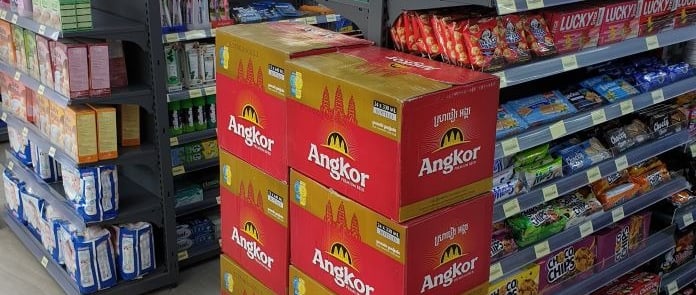Business Strategic Plan | Strategic Web Designer | Sales Tools Creator | Training & Coaching | Plant Layout Signing Services
Profit Management for Cambodian Convenience Stores
Chaos to Convenience: A Crash Course on Convenience Stores Operations Revamp & Transformation Fueled by Data and Teamwork. Building Profitability to Revitalize Retail Business.


Synopsis
A small convenience store in Cambodia was plagued by multiple issues: disorganized product management, incorrect pricing and discounts, unclear customer focus, inefficient inventory management, and unmotivated staff. This case study delves into the strategic analysis and operational improvements undertaken to revitalize the business, leveraging data analysis and retail expertise.
Imagine navigating a foreign retail landscape, armed with expertise but facing language barriers and a store mired in chaos. As a consultant-coach for operational change, I was tasked with a 5-month journey to train the owner and staff to transform a Cambodian convenience store into an efficient and profitable one. This wasn't just a challenge; it was a cultural journey.
The Challenge
My deep dive into data and activities unveiled inefficiencies and missed opportunities everywhere. But beneath the chaos, I saw potential and helped them articulate it better while training them.
Using a multi-faceted framework encompassing assortment planning, pricing strategies, space optimization, and staff training, I identified key areas for improvement:
In-Store: Incorrect stock levels, inconsistent cycle counts, and lack of planograms led to profit loss and poor customer experience.
Inventory: Inefficient storage, unlabeled items, and wasted space hindered operational efficiency.
Customers: Absence of targeted promotions, competitor analysis, and customer behavior understanding limited sales growth.
Staff: Lack of discipline, improper task execution, and inadequate training resulted in low morale and subpar performance.
Methodology
Data Collection and Analysis: Comprehensive inventory and front-of-house audits, customer surveys, competitor analysis, and staff performance evaluations yielded insights into the store's challenges and opportunities.
Framework Implementation:
Inventory Management: Introduced cycle count procedures, optimized stock levels, and employed real-time insights to track inventory.
In-Store Optimization: Adjusted product offerings based on demand, pricing adjustments, and space allocation through planograms.
Merchandising Management: Standardized product labeling, addressed maintenance issues, and reorganized storage for efficient space utilization.
Customer Focus: Walked 2 blocks around the store to identify potential customers and tailor product offerings and promotions. Developed targeted promotions, analyzed competitor strategies.
Training and Empowerment:
People Development: Developed Standard Operating Procedure (SOP) manuals and timelines to streamline workflows and reduce waste.
Training Program: SOPs weren't documents, but blueprints. Provided hands-on training on cycle counts, product knowledge, customer service, and operational procedures.
Motivation Strategy: Introduced performance incentives and gamification approaches to foster engagement and ownership.
Project Outcomes
Improved Inventory Management: Optimized stock levels and locations, reduced loss, and increased product availability.
Effective Pricing and Promotions: Increased profit margins and attracted new customers with data-driven strategies.
Enhanced Customer Experience: Improved store layout, product variety, and staff knowledge led to higher customer satisfaction.
Empowered Team: Motivated and skilled staff with ownership mindset drove operational excellence.
While the project didn't yield numerical results due to confidential, non-disclosure data, the short timeframe, and language barriers, the impact was undeniable. The store saw significant transformations in profitability, customer engagement, and overall morale.
Conclusion
This wasn't just a business case study; it was a cultural exchange. I navigated language barriers, empowered a team, and proved that coaching and consulting can turn chaos into profit for a small convenience store in Cambodia.
This is one case study I'm proud of, using my psychology and communication skills to pull them out of their comfort zone. My data analysis, coaching, and retail expertise helped them transform a small convenience store from struggling to thriving in just 5 months.
Are you looking for a coach and consultant to empower your retail team? My data-driven approach and coaching expertise can help energize your team and optimize your operations. Contact me to discuss your specific challenges and explore how we can work together to achieve your goals.
